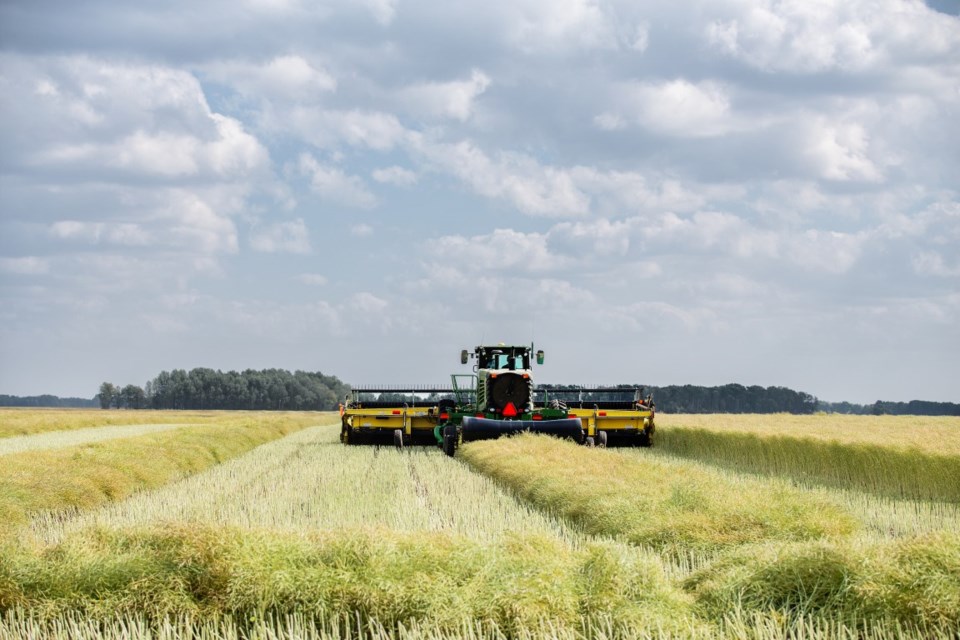SASKATOON — Growers who give canola crops time for all seeds to reach maturity can see a 10 per cent increase in yield. That is why the Canola Council of Canada recommends swathing when the main stem shows at least 60 per cent seed colour change.
Evidence for this later cutting time has been gathered over the years, starting with a Canola Council study from the early 2000s. Results showed that canola swathed at 60-70 per cent seed colour change (SCC) yielded 11 per cent more than fields swathed at 30-40 per cent. In 2013, Indian Head Agricultural Research Foundation compared two swath timings – 20-30 per cent and 50-60 per cent SCC – and found that waiting a week until canola reached the more advanced stage increased yields by nearly nine per cent. BASF trials found that 60 per cent SCC is the “sweet spot” for hybrids without the pod-shatter trait. For hybrids with the pod-shatter trait, BASF trials showed higher yields for canola swathed at 80 per cent and highest yields for canola straight combined.
A 2020 Canola Council survey of 1,000 canola growers suggests many are cutting too early, and leaving yield on the table. Of the growers who swath all or some of their canola, the survey found that half of them target an SCC of less than 60 per cent when deciding to swath.
Growers may have reasons to cut early based on frost risk and logistics, but where possible, we’d like to see the target shift to later cutting.
What does 60 per cent SCC look like?
At 60 per cent SCC on the main stem, seeds from the bottom third of the stem will have completely turned brown-black in colour. Seeds from the middle third will be mostly brown, with some speckling and mottling. Seeds from the top third will still be green but firm to roll. Seeds that are mushy when rolled between the thumb and finger are not physiologically mature and will shrivel up after cutting. With the main stem showing this level of maturity, seeds from side branches should also be firm to roll. If they’re not, growers may want to leave the field standing a little longer. SCC will typically increase by about 10 percentage points every two or three days (quicker under hot dry conditions, slower under cool moist conditions), so waiting a week can provide a big boost in yield and potential profit.
Uneven fields
Canola fields with plants at varying states of maturity often have growers wondering when to cut the crop. Ideally, the least-mature areas of the field will be left until their seeds reach physiological maturity. Swathing remains the best and least risky option to manage extreme variation in maturity, however uneven crops could be left for straight combining. While early maturing plants may start to shell out, late plants have more time to mature. And straight combining eliminates the need to make the swath timing decision at all. Of the farmers who participated in the 2020 CCC survey, 19 per cent straight combined all of their canola acres.
For more on this topic, please read “Swath later for higher yield” in the Harvest section at .
– Shawn Senko is an agronomy specialist with the Canola Council of Canada. Email [email protected].






